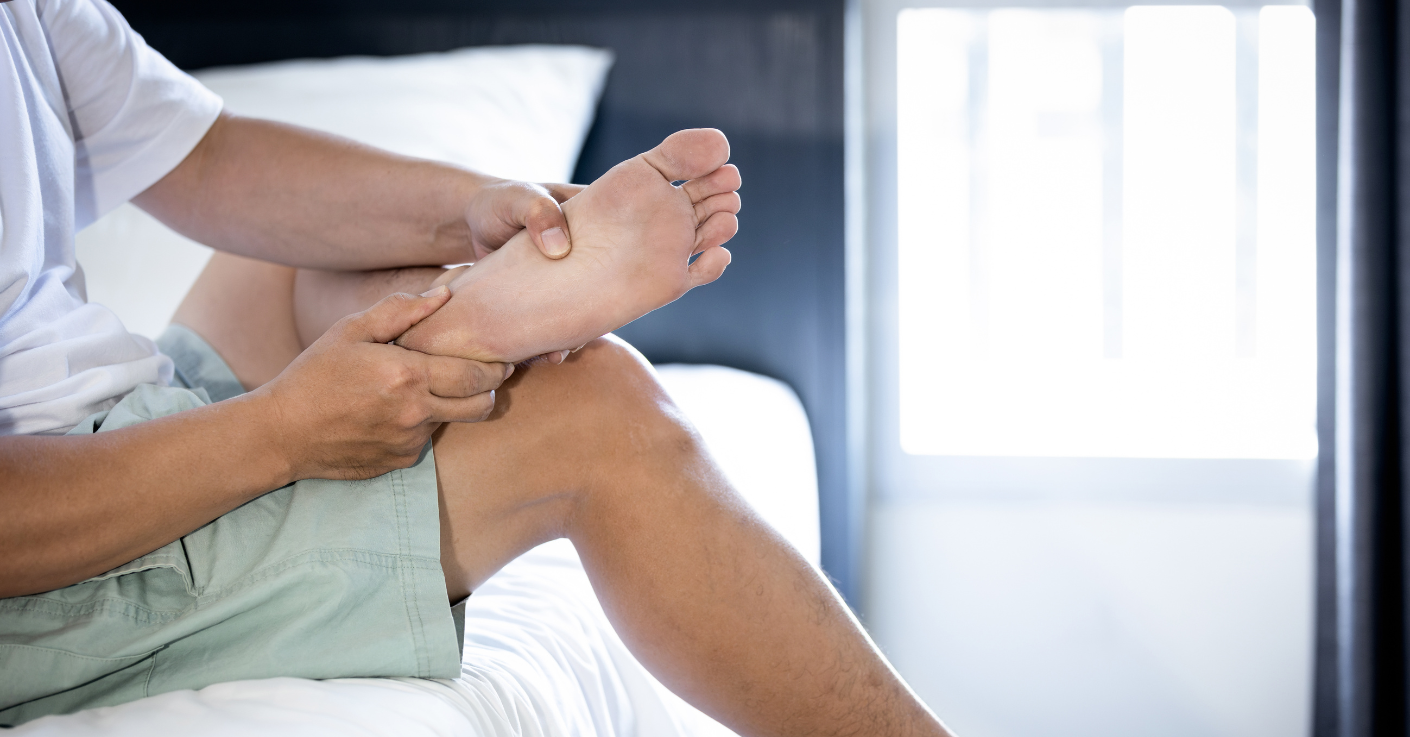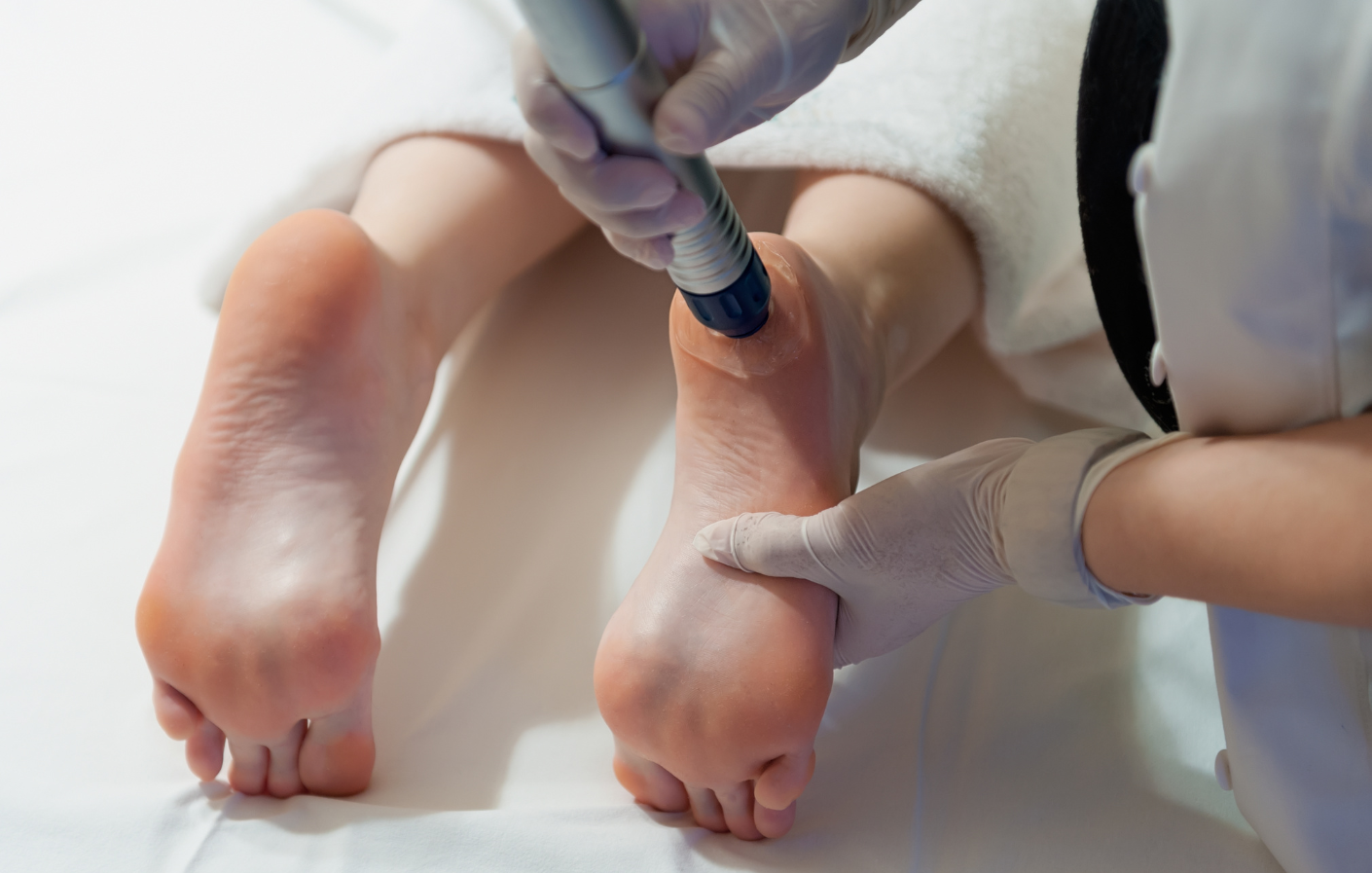

They may be small, but verrucas, also known as plantar (foot) warts, are much more than just a minor annoyance. They can be painful to walk on and extremely persistent, making your day to day life a lot less pleasant or comfortable. As one of Auckland’s leading podiatry clinics that specialise in ingrown toenails, we know many people that seek long lasting solutions for ingrown nails are also searching for professional treatment to effectively remove these stubborn warts, especially if they’ve had unsuccessful attempts in the past using cryotherapy (wart freezing) or patches from the pharmacy. So what can really be done for plantar warts?
Verrucas are a specific type of wart that typically appears on the soles of the feet, as well as the borders of the feet and the toes. They are caused by the human papillomavirus (HPV), which enters the body through direct contact with entry points via tiny cuts or breaks in the skin on the foot. Once established, verrucas can be recognised by their cauliflower-like appearance and may have one or multiple small black dots at their centre, which is caused by clotted blood vessels. Unlike other warts, verrucas are often flat due to the pressure placed on them when walking. They can be painful, especially when located on weight-bearing areas of the foot. Due to their viral nature, verrucas are contagious and can spread to other areas of the foot or to other people through direct contact or shared surfaces like gym floors or swimming pool areas. That’s why if someone in a household has a wart on their feet, we recommend getting it treated promptly to reduce the risk of it spreading – especially if you’re sharing surfaces like shower floors.
While there are numerous home treatment options available, it’s likely that you’re reading this because these haven’t worked for you. And truth be told – they don’t work for most people, either. This is why you’re doing the right thing seeking professional help from an experienced podiatry team for verruca removal.
Professional treatments are faster, more reliable, and safer than DIY methods, which can sometimes lead to skin damage or infection if not done properly. We not only use specialised and evidence-based techniques to treat verrucas effectively, but we make sure that your long-term foot health is prioritised at all times.
By opting for professional verruca treatment or removal, you receive a comprehensive treatment plan tailored to your specific needs, making it the safest and most effective option for dealing with foot warts of all sizes and severities.
Several professional techniques are employed to effectively remove verrucas, each with its own advantages and safety profiles. Here are the most common methods used:
Each of these methods has its own set of considerations, including the number of treatments required, the recovery time and the likelihood of success. Your podiatrist will provide guidance on which method may be best suited to your specific situation based on the size and location of the wart or warts, as well as your overall health.
Choosing the right podiatry clinic is an important part of achieving the best results for your verruca removal. Here at Perform Podiatry, which is the home of the Auckland Ingrown Toenail Clinic, we’re proud to have verruca treatment and wart removal surgery as one of our areas of expertise. We also offer:
Dry needling for plantar warts begins by administering local anaesthetic to numb the area. Once the anaesthetic takes effect, we use a hypodermic needle to puncture the verruca repeatedly. This helps to stimulate the immune system to recognise and fight the virus that’s causing the wart.
Following the needling, we apply a simple dry dressing to protect the area and keep you comfy. It’s crucial to keep this dressing dry for at least twenty-four hours to prevent infection and promote the initial stages of healing. You should begin to feel sensation in the area within two to three hours after the procedure.
After forty-eight hours, it is safe to shower, and normal activities can typically be resumed without significant disruption. Some slight discomfort may be experienced during the first couple of days post-procedure.
The healing progress is monitored by your podiatrist with follow-up visits scheduled approximately two weeks after the procedure to check the healing and remove any scabbing. A final check around eight weeks later helps to assess the degree of regression of the plantar wart, ensuring the effectiveness of the treatment and guiding any further care.
Surgically removing a plantar wart also begins with using anaesthetic to numb the area. Once the area is numbed, the edges of the wart are carefully circumscribed. This step involves delineating and separating the affected viral tissue from the healthy surrounding tissue to prevent any spread of the virus during removal.
Using a curette (a surgical instrument designed for scraping), we’ll then meticulously scoop out the entire plantar wart. Removing the entire thing minimises the risk of recurrence at the treatment site. After the removal, the area is carefully dressed to promote optimal healing, protecting it from infection and aiding in the recovery process.
You can resume showering and their normal daily activities after forty-eight hours, ensuring that the dressing remains intact and the area stays clean to support healing. Despite the high effectiveness rates that we achieve in our clinic from this treatment, it is important to note that there is no guarantee that warts will not reoccur in the future. The human papillomavirus (HPV), which causes plantar warts, remains in the body even after the warts are removed. This means that future outbreaks can occur unpredictably, depending on your unique immune response to the virus and certain events in your life (such as times of high stress).
Preventing plantar warts is an essential part of foot care, especially if you frequent communal areas like gyms, swimming pools, or locker rooms where the virus thrives. Here are some preventive measures you can take:
The level of discomfort that you may experience will vary depending on the treatment method you choose. This is something your podiatrist will go over and explain prior to starting any treatment for plantar warts.
Again, your recovery times will change based on the treatment method and your healing response, which is dependent on a number of things like your overall health status. Typically, most patients can resume normal activities within a few days, but it may take several weeks for complete healing.
Your coverage will vary depending on your health insurance policy and the nature of the treatment. Some policies do cover treatments deemed medically necessary, and others may not include treatments for skin conditions including warts. We highly recommend checking in with your insurance provider for specific details regarding your coverage prior to booking your appointment as we don’t have access to any information about your specific policy.

We’ve welcomed the Nu-Tek low-level laser into our podiatry clinic. Here's how you tell if it could be the answer to your foot
pain.

Otherwise known as radial pressure wave therapy, shockwave therapy is a device held by our podiatrists and positioned against your foot or leg at the site of your injury.
Keeping your family on their feet and helping them to walk, run, play and exceed their goals is why we love getting up in the morning.
We're located inside the One Health medical centre at Building 122 Remuera Rd, Remuera, Auckland 1050, New Zealand
| MON - SAT | 8:30am – 6:00pm |
| SUN | Closed |
Make an Appointment
Online Schedule